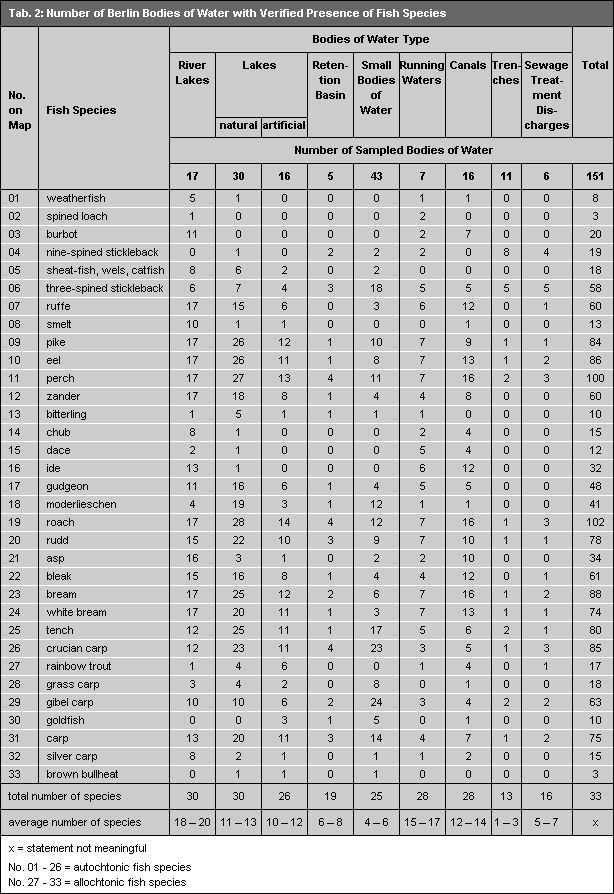Data from 151 sampled waters were evaluated for updating the Berlin Environmental Atlas. In order to use this data for evaluation, it is necessary to develop an idea of which fish fauna are capable of surviving under given conditions, and can thus be expected to be found. The difference between the potential and actual number of existing species can serve as a starting point for the evaluation of how near a body of water is to natural conditions. A wide variety of scientific publications deal with the theoretical and practical range of fish species which can be expected to be found in a body of water, from geological, geomorphological, fauna and fishing points of view. Common to all of these viewpoints is that the number of fish species depends on the structural diversity of the habitat, and thus directly on the type of body of water. Lakes with outflow, for example, have both running as well as still water areas. They offer suitable habitat conditions for both lotic, rheophillic (preferring strong currents) and lentic limnophillic (still water) fish species. River lake lowlands accommodate a diverse spectrum of fish species. Only lentic, limnophillic species find optimal habitat conditions in still lakes. In rivers, usually only lotic, rheophillic species. The number of fish species expected in stillwater types is thus less than in river-fed lakes.
Nine categories were made for the comparison of Berlin bodies of water:
- running waters
- river lakes
- natural lakes
- manmade lakes
- retention basins
- small bodies of water
- canals
- trenches
- sewage treatment plant discharges.
It was necessary to divide lakes into natural and manmade categories because the former can be naturally populated and fish stocks in the latter are due to stocking. Retention basins and sewage treatment plant discharges as manmade small bodies of water, whether still or flowing, were also given their own category, for they usually prove to have the highest constructed condition. The number of sampled bodies of water for each category is given in Table 2.

